I ran along the wide gravel path with meadowlarks singing in the background and the occasional mourning dove flushing before me. I’m admittedly not paying much attention. As is often the case when I run, my mind is a whirlwind, a swirling mess of story ideas and deadlines and hopes and worries.
And then: A slither. A hiss. Just like that, I’m back in the world.
Snakes bring a distracted mind fully into the present.
Just two feet in front of me, a large snake quickly came into focus; it hissed again and then coiled. It began shaking its tail. But this was not a rattlesnake. I recognized it as a Great Basin gopher snake, a frequent sighting on my quarantine trail runs over the past month.
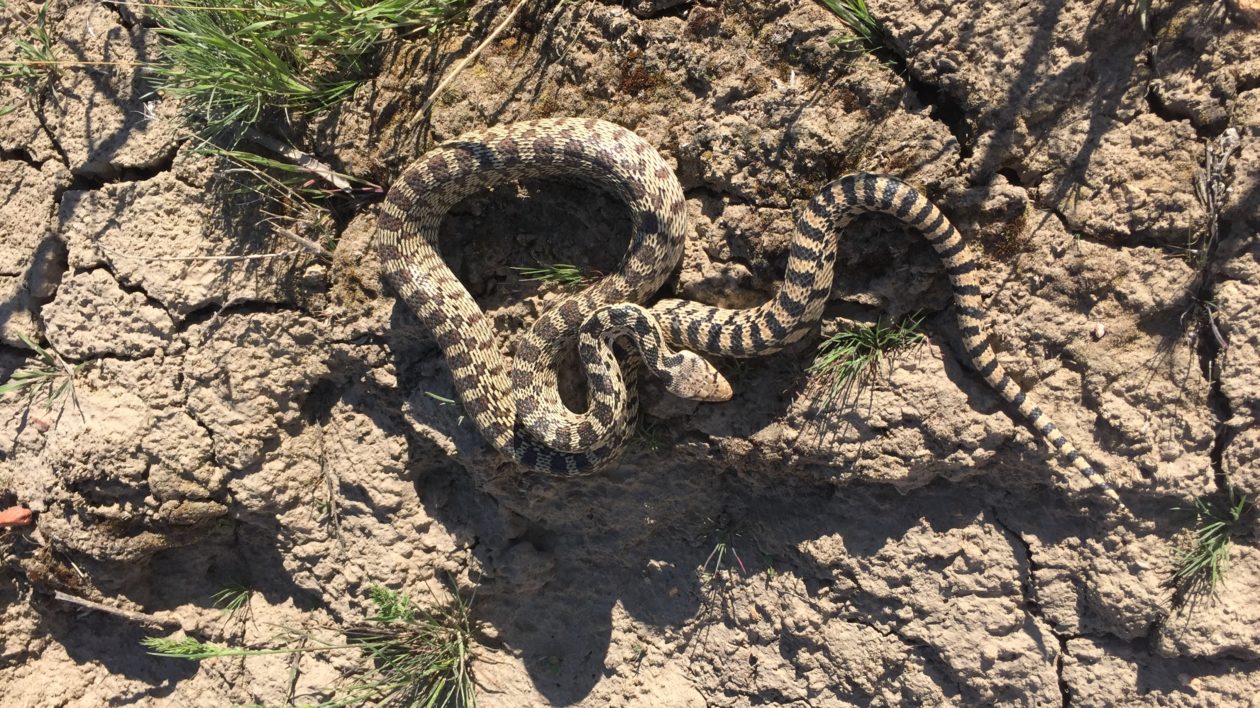
I prepared to continue on my run, but then I saw another, larger snake on the opposite side of the trail. This snake seemed completely unbothered by my presence. In fact, it seemed as distracted as I had been a few seconds earlier.
The smaller snake uncoiled and no longer seemed to regard me as a threat. Odd. Usually the gopher snakes moved quickly off the path when I came upon them. The larger snake moved closer to me, alongside the other. It began wiggling back in forth; to my eyes, it looked like a dance.
As I caught my breath (just from the running, of course), I realized I was about to see something new. I made the decision to move to Boise, Idaho almost exactly 19 years ago. I’ve been exploring the nearby foothills ever since, witnessing a wide array of natural spectacles. And after all these years, I still can find something new. And, in this case, something unforgettable.
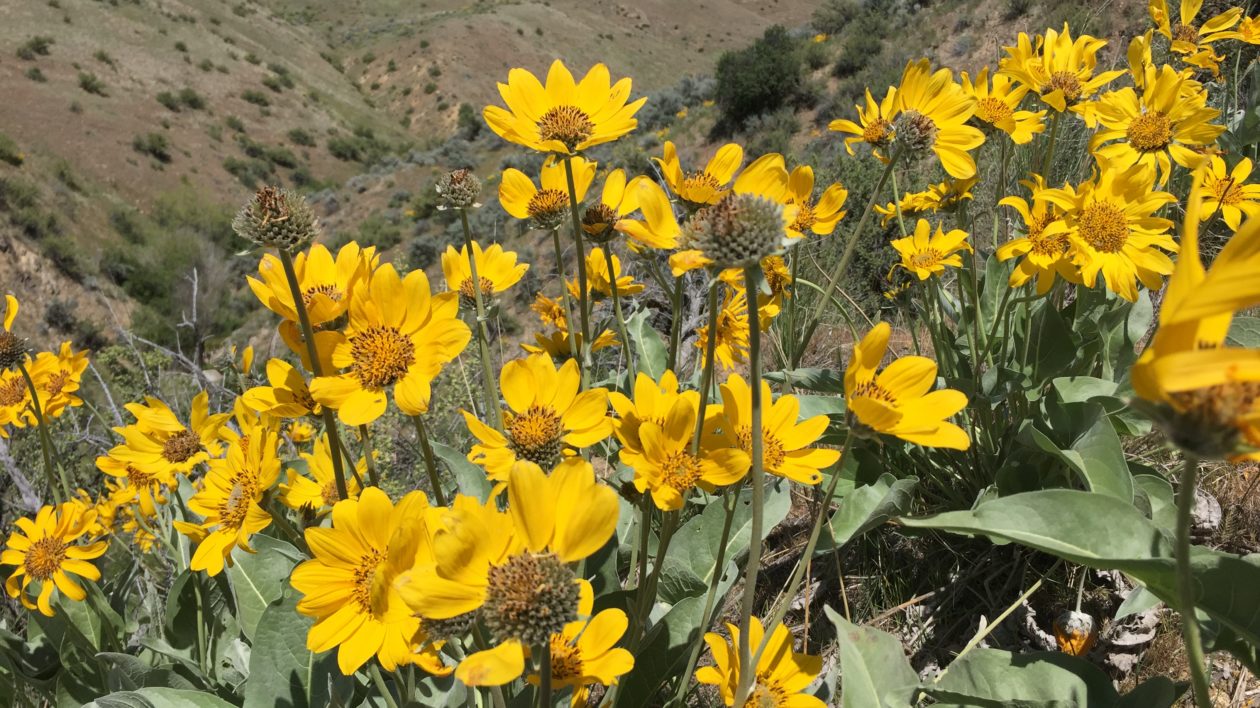
Meet the Gopher Snake
Gopher snakes (Pituophis catenifer) are the most common snake species in Idaho, as is the case in many Western U.S. states. They’re also the largest, capable of exceeding 5 feet in length.
They’re frequently encountered in the sagebrush-steppe of the southwestern part of my state. They are also frequently mistaken for rattlesnakes. Their pattern does bear a superficial (very superficial) resemblance. But it is the habit I witnessed that causes the confusion. The gopher snake coils up and shakes its tail, like a rattle. It hisses loudly and may even flatten its head.
There’s no rattle, and no venom. This is a case of mimicry. It might cause a predator to back off. Unfortunately, it also might cause a thoughtless human to kill the snake, believing it to be “dangerous.”
Gopher snakes are longer and slimmer than rattlesnakes. A decent field guide or online reference will help you tell the difference. In any case, the best course of action is to leave the snake alone. More people are bitten by rattlesnakes by messing with them than by just stumbling across one.
But gopher snakes are beneficial to have around. They eat a lot of rodents including voles, a species prone to large irruptions that spill into agricultural fields, gardens and backyards. They are also an important prey item, especially for larger raptors. In the area where I run and hike, I often see red-tailed hawks carrying gopher snakes in the summer. (To witness four feet of twitching serpent dangling from talons overhead is a bit of an unsettling sight, to be sure).
After the snakes emerge from hibernation, they seek out places to warm themselves. Sadly, this includes roads. When a car approaches, the snake coils up and does its defensive display, leading to a lot of dead snakes.
The trail I run was a former ranch road, and it too attracts sunning gopher snakes. Usually, they quickly slither away or attempt to scare me away. But one day this spring, I observed something more.
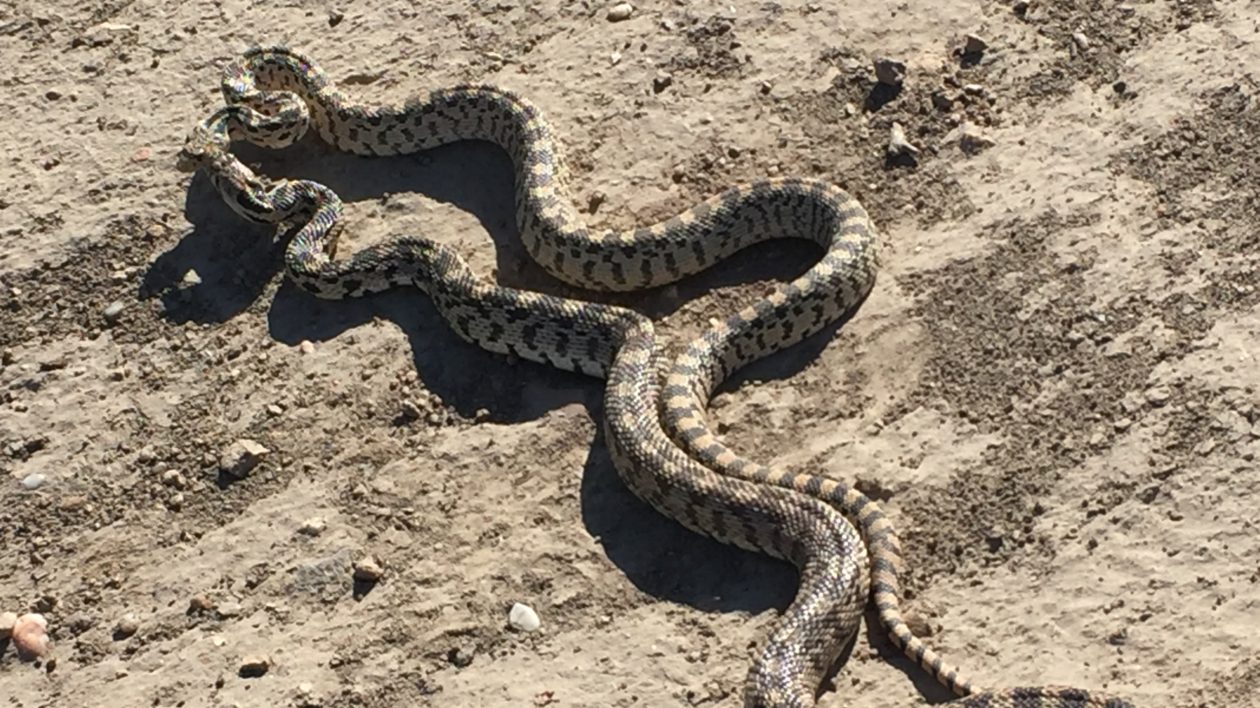
The Courtship of Snakes
When they’re not hibernating, gopher snakes are generally solitary creatures. Indeed, I’ve only ever seen individuals in my many years roaming the sagebrush. But in the spring, females emit a pheromone that draws in the male snakes to mate.
Males sometimes engage in ritualistic “fighting” over a female (a habit that is also observed in rattlesnake species, and as snake expert David Steen writes, is often mistaken as a “mating dance”).
I could see two snakes in front of me. What I deduced was the male snake, sidled up alongside the female, and began twisting from side to side. The female appeared to relax as the male did this. The male inched closer and then climbed atop.
The next 15 minutes was a series of writhing and twisting, the snakes never apart. They were often wrapped around each other so tightly as to give the appearance of knotting. Often their movements were somewhat subtle. I once watched mating Western rattlesnakes at The Nature Conservancy’s Silver Creek Preserve, and the writhing was so athletic as to appear violent. The gopher snakes were far more subdued.
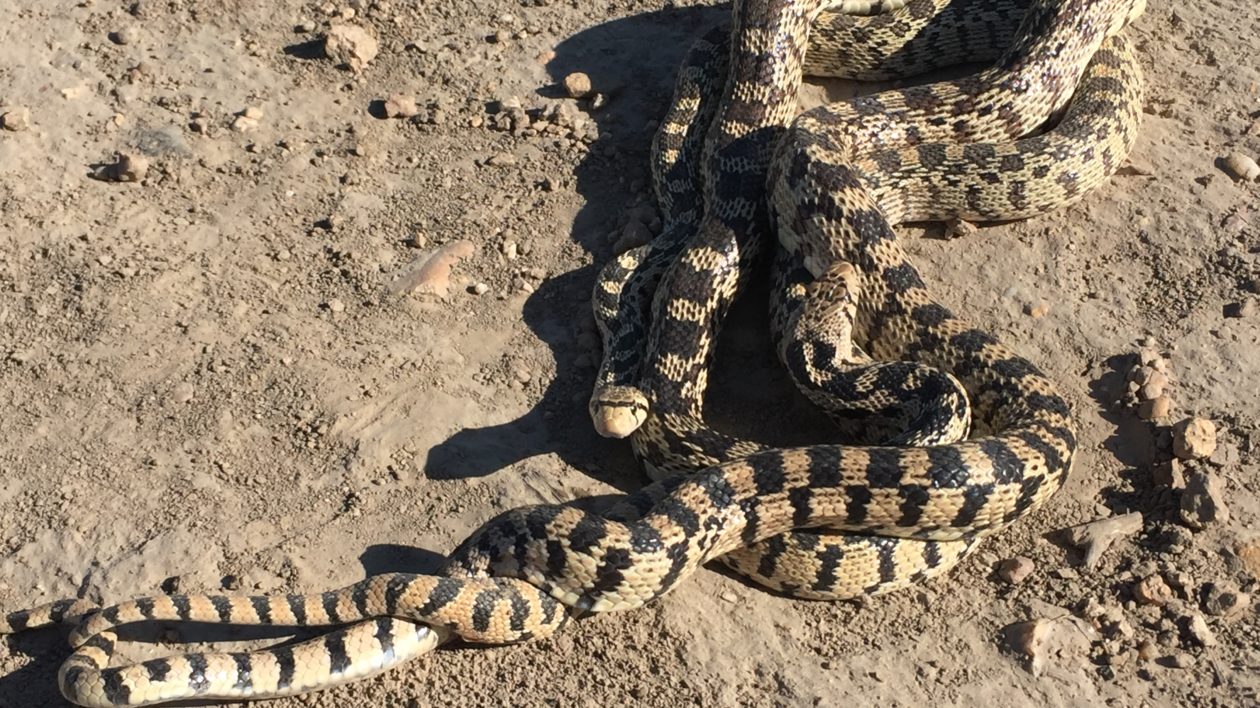
The two snakes often repositioned themselves so there heads were touching, giving the image of serpentine intimacy. Many written accounts note that the male may nip at the back of the female’s head, but I never saw this behavior.
I openly admit that at times I involuntarily shuddered. I had that sense all that wiggling would revisit me during my late-night dreams. But still, I watched, transfixed.
The snakes appeared to pay me no mind. In time, I felt like an intruder, a voyeur. After texting my spouse that I’d be late for dinner due to mating snakes (we’ve been married long enough that she didn’t even express a hint of surprise), I left them in peace.
I felt lucky to experience such an event. And I can assure you, for the rest of my run, my mind did not wander to anxieties or deadlines. I was alert. Wide awake. I watched my step, not out of fear, but because you never know what wonder awaits.
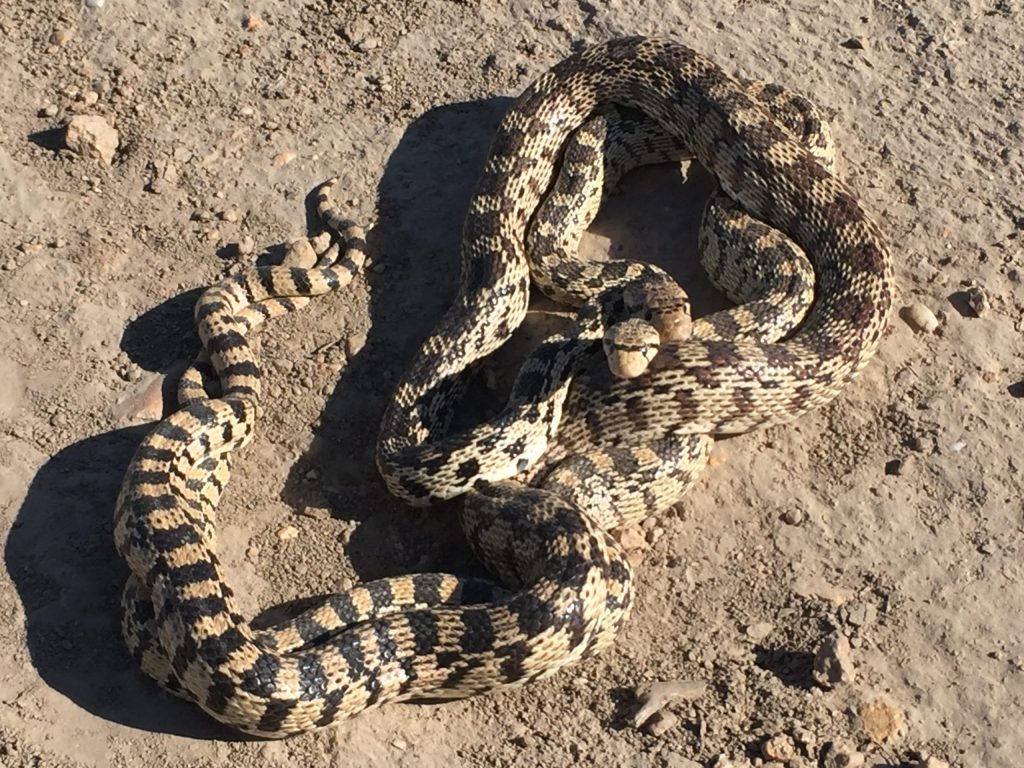



Hi Matt. Very neat observation. While volunteering at the Silver Creek Visitor Center for the past couple of Augusts I would catch medium size ones and slip them into the crawl space underneath for some help with the mouse problem. P.S. Check out the Orianne Society.
What a great article! Gophers are one of my favorites, and living where I do, I run across the Great Basins often (though the Pacifics are my faves). Keep up the great work!
My husband and I were lucky enough to witness two male Sonoran Gopher Snakes fighting. I used to keep and breed snakes, so I knew instantly that it was not mating that we were observing. They were twisting around each other like rope and pushing each other’s heads down. Eventually they rolled down a hill into a ditch and swam away from each other.
Fantastic write up. Just about two weeks ago I noticed a very long snake slowly slithering in our backyard & thought it might be a rattler. On closer look I thought it looked more like a gopher snake. I’m not sure whether it was male or female but it was definitely looking around for something interesting & headed into my garden. Needless to say I kept away from the garden for several hours. I’m in north Scottsdale tip of Sonoran desert so snake sightings are not unusual this time if the year. I learned a lot from your observations & descriptions. Our snake & those you photographed are quite handsome in my opinion!
You were lucky to witness an increasingly rare sight now that almost all snake species are getting scarce.
Great action photos and informative commentary. I felt like I was right there. Thanks.
Could snakes, theoretically, exist on any other planet than earth?what are their adaptation abilities?
Thank you for such wonderful insights into the natural world!
A great story. Thanks